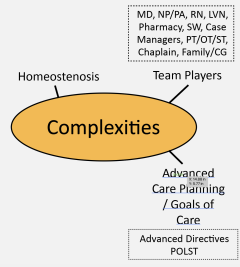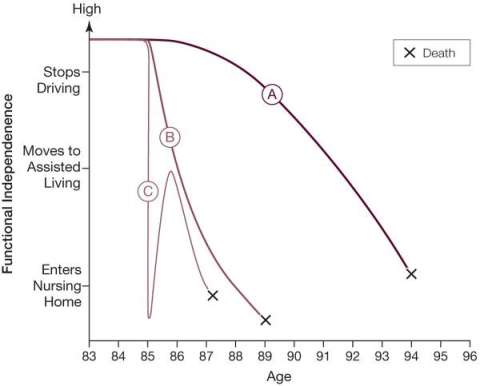Geriatrics
Clinical Skills | Complexities
Complexities Domain

In addition to our patients' Medical, Cognitive, Functional and Psychosocial Domains, the following are important considerations in their care:
- Team Players: Our geriatric patients often have a multidisciplinary team
- MD's from different subspecialties
- Registered nurses
- LVN's: Licensed vocational nurse
- MA's: Medical assistants
- PT/OT: Physical and Occupational therapists
- Case/discharge planner
- Pharmacist
- Speech therapist
- Spiritual
- Family and caregivers
- Goals of Care: Always initiate early on in relationship, either at 1st or 2nd meeting and then periodically after that – a discussion about goals of care. This is often not asked at other times. And also, it will help guide your approach to intervention
- Includes discussion about overall quality of life
- View the POLST form
- Homeostenosis: A key concept in aging is called homeostenosis, which plays a large role in determining patient outcomes with aging. As our patients age, there is a reduction (or stenosis) of their reserve capacity, and ultimately need to spend more energy to maintain the status quo. Therefore, older adults have less ability to compensate after stressful events or after illness or insult to their health.

- Diabetes, osteoarthritis (chronic conditions)
- Parkinson’s disease, Alzheimer’s disease
- Stroke, hip fracture